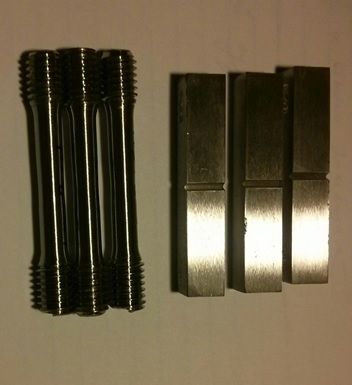Advanced Materials Development Corp. Offers New Material Options for Automotive Components
Car and truck manufacturers are faced with the difficult task of significantly improving fuel economy while maintaining safety and competitive position in the market. Improving fuel economy will require innovative changes in material and design. One material change which is available immediately is the newly developed Auto-Steel.
Hot rolled or hot forged bars of Grade1 Auto-Steel are applicable for use in car and truck carburized powertrain and transmission components such as shafts, gears, axles and more. The carburized Grade1 has the surface hardness of Rockwell C 61-62 and the core hardness of Rockwell C 45-46, which is higher than the well-known SAE 4320, 8620, and 9310 carburized steels at the same ductility and toughness. Cost of production of Grade1 is 10-12 percent lower than the cost of SAE 4320 steel.
Grade2 of the Auto-Steel is a medium carbon, deep nitriding composition that is ideal for high precision components. After normalizing, quenching, tempering and nitriding by conventional methods, Grade2 has the case depth of 0.010-0.020 in. with the surface hardness of Rockwell 15N 91-92 and the core hardness of Rockwell C 46-48; an ultimate tensile strength (UTS) of 225-235 ksi; a yield strength (YS) of 205-215 ksi; an elongation (El) of 9-10 percent; a reduction of area (RA) of 40-45 percent; and Charpy v-notch impact toughness energy (CVN) of 14-18 ft-lb. Grade2 is applicable for bearings, gears, shafts, pinions, crankshafts, camshafts, bolts and other high precision components. Cost of production of vacuum melted Grade2 is similar to the cost of the vacuum melted Nitralloy 135 steel.
Grade3 of the Auto-Steel is a super-high strength composition for transmission and powertrain components such as gears, crankshafts, camshafts, axle shafts, connecting rods, and other. After quenching and tempering Grade3 has the hardness of Rockwell C 58-60, UTS of 325-335 ksi, YS of 255-265 ksi, El of 7-9 percent, RA of 30-32 percent and CVN of 12-16 ft-lb. Cost of production of the Grade3 is similar to the cost of SAE 4350 steel.
The following method of manufacturing the lightweight automotive transmission and powertrain components from Grade3 is proposed as follows: Normalize and stress relieve or fully anneal hot rolled or hot forged bars, machine components from the bars, harden the components by normalizing, quenching, and tempering or secondary hardening and finally finish grind the components.
After the hardening, core and surface hardness of the components are Rockwell C 58-60 compared to the surface hardness of Rockwell C 58-62 and core hardness of Rockwell C 40-41 of the carburized, quenched, and tempered SAE 8620, 4320, and 9310 steels.
Utilizing Grade3 provides weight reduction of the components by decreasing their cross sections. For example, the new method is predicted to enable a 20 percent weight reduction of gears in a standard 230 lbs. automatic transmission with 130 lbs. of gears over using carburized SAE 8620, 4320 and 9310 steels. Granted, utilizing the Grade3 requires additional investment in redesigning of the components. However, the benefits of utilizing the new method significantly exceed the costs of its implementation.





 Power Transmission Engineering is THE magazine of mechanical components. PTE is written for engineers and maintenance pros who specify, purchase and use gears, gear drives, bearings, motors, couplings, clutches, lubrication, seals and all other types of mechanical power transmission and motion control components.
Power Transmission Engineering is THE magazine of mechanical components. PTE is written for engineers and maintenance pros who specify, purchase and use gears, gear drives, bearings, motors, couplings, clutches, lubrication, seals and all other types of mechanical power transmission and motion control components.